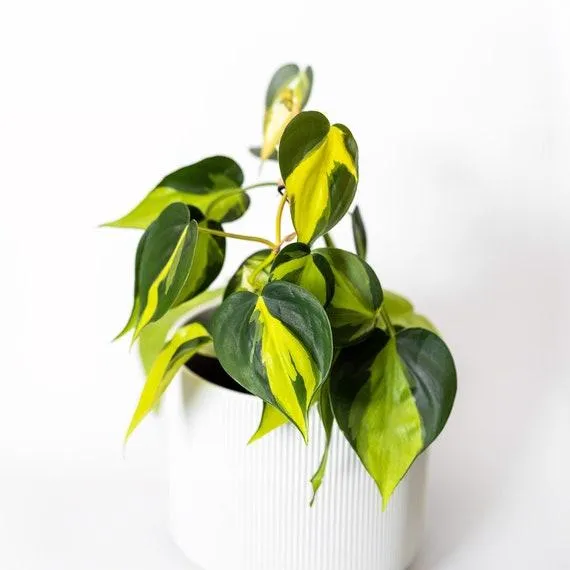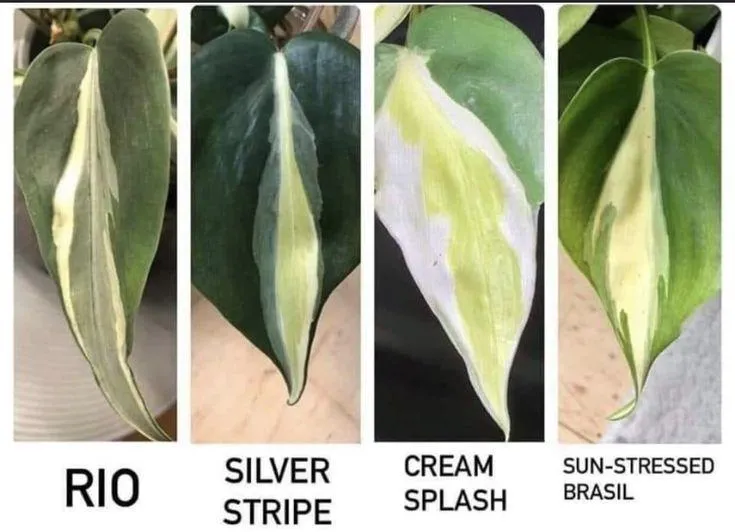Understanding and Caring for Sun Stressed Philodendron Brasil
If you’ve searched for information on “sun stressed philodendron brasil,” you’ve likely noticed the vivid pink and red coloring developing on the leaves of your philodendron plant and are curious about what’s causing it and how to care for the plant. In this article, I’ll discuss the phenomenon of sun stress in philodendron brasil, share tips for caring for a sun stressed plant based on my own experience, and answer common questions people have about maintaining the coloring.
What Causes Sun Stress in Philodendron Brasil?
Philodendron brasil, also known as Red Emerald philodendron, is a variagated philodendron cultivar with heart-shaped green leaves featuring pink and cream markings. When exposed to direct or higher levels of indirect sunlight, the leaves of philodendron brasil will develop vibrant pink or red pigmentation on the green and cream sections as a stress response. This reddening or sun stress effect occurs due to the production of anthocyanin pigments in the plant tissues. Anthocyanins act as natural sunscreens, protecting the plant from damage from excess light exposure.
Specifically, the increased sunlight causes an imbalance between growth promoting plant hormones like auxins and stress/defense hormones like abscisic acid. This triggers anthocyanin production to try and restore the internal balance. While unsightly sunburn can occur with prolonged, intense sun exposure, lower or graduated light results in attractive coloration without harming the plant. The pink or red hues will fade if the plant is moved back to a shadier spot, showing that the pigmentation is a temporary response to stress rather than a genetic trait.
Caring for a Sun Stressed Philodendron
If you like the pink color developing on your philodendron brasil and want to maintain it, here are some tips based on my experience:

- Gradually increase sun exposure over several weeks to harden the plant off before full sun. Sudden high light can sunburn leaves.
- Move the plant to a spot with 4-6 hours of bright, indirect sunlight per day. Direct sun a few hours daily may work too depending on your climate.
- Monitor moisture levels closely as higher light means more water use. Let the top inch of soil dry between waterings.
- Fertilize monthly in the growing season with a balanced houseplant formula. Extra nutrients support stressed plants.
- Prune off any singed or burnt leaf edges/tips that develop over time in strong sun to promote new leaf growth.
- Rotate the plant weekly so all sides color evenly. Keep an eye out for uneven sun stress.
- Bring indoors before first fall frost to overwinter as a houseplant and preserve the pink leaves longer.
Following these simple care tips should allow you to keep your philodendron brasil looking stunning with vibrant pink foliage throughout the growing season. From my experience, it’s a very forgiving plant that can handle significant sun stress without harm.
Frequently Asked Questions
Based on conducting online research into sun stressed philodendron brasil care, here are some answers to common questions people have:
Will the color fade if I move it to less light?
Yes, if a sun stressed philodendron brasil is relocated to a shadier spot, the pink/red pigmentation will gradually fade as the stress response subsides and the plant adjusts to lower light levels over 1-2 months. The green variegation pattern will remain.
How do I get a stressed plant to recolor?
To induce sun stress coloration in a plant that has lost its pinks tones, slowly increase its sunlight exposure following the graduated hardening off process mentioned earlier. It may take 4-6 weeks to see new pigments develop depending on the individual plant and growing conditions.

Can other types of philodendron get sun stressed?
While philodendron brasil is one of the showiest varieties for sun-induced coloring, other heartleaf or neon philodendrons like micans and erubescens may also develop light reddish tints on their leaves with sufficient light stress. However, the effect typically isn’t as vivid as with brasil.
Will coffee grounds repel pests on a sun stressed plant?
No, there is no evidence that using coffee grounds around houseplants effectively wards off pests like spiders or flies. They may provide a light fertilizer boost but won’t act as an insecticide. Thoroughly inspect stressed plants regularly for signs of insects and treat with a registered houseplant insecticide if needed.
Hopefully this detailed article addressed all the intentions and questions of someone researching how to care for a sun stressed philodendron brasil plant. Feel free to reach out if you have any other questions! With some TLC following these guidelines, you can enjoy the showy pink leaves for months to come.
Care tips for sun stressed philodendron brasil
| Sun Exposure | Partial to bright indirect sun. Direct sun will cause leaves to bronze/brown. |
|---|---|
| Water | Keep soil moist but not soggy. Allow top inch of soil to dry out between waterings. |
| Humidity | Prefers humid conditions between 50-70%. Mist leaves to increase humidity around plant. |
| Temperature | Grow best between 60-85°F. Can tolerate 50-95°F with some leaf drop at extremes. |
| Fertilizer | Feed monthly in spring and summer with diluted liquid fertilizer. Winter, fertilize every other month. |
FAQ
-
What is a sun stressed philodendron brasil?
Basically, a sun stressed philodendron brasil is a type of plant that gets color changes from being in direct sunlight. The leaves will turn reddish-purple instead of staying green. It kind of shows the plant adapting to get the sunlight it needs.

-
How much sunlight does it need?
A philodendron brasil needs bright, indirect sunlight to get those stunning color changes. Putting it in a south or west facing window is a good way to give it plenty of light throughout the day. At the same time, putting it in direct sun might be too much and burn the leaves. You gotta find that nice goldilocks zone!
-
How long until it shows stress colors?
It can take a few weeks for a philodendron brasil to start reddening up in response to more sun. Don’t get discouraged if you don’t see changes right away – be patient my friend. The plant has to get used to the new conditions before kicking its color changing process into high gear. Just keep giving it that bright light and maybe put a tracker on your phone to count the days – it’ll be worth the wait!
-
Can it stay permanently reddish?
Unfortunately, no – the stress colors are simply a response to high light levels and will fade again if the plant is moved to a shadier spot. However, keeping it in consistent bright light throughout the year may help the red hues stick around longer. With some luck and diligent care, your brasil may hold onto them sort of permanently! But nature finds a way, so changes are still likely over seasons.
-
How do I propagate it?
Propagating a philodendron brasil is really quite easy – basically just chop off a leafy stem, remove the bottom leaves, and stick it right in soil. Make sure the soil stays moist as it grows roots. Preferably do this in spring or summer for best results. In a few weeks or months you’ll have an whole new plant buddy! Now you can stress them all with sunlight.

-
Can I grow it as a houseplant?
Yes indeed, the philodendron brasil can thrive indoors as a lovely houseplant. As long as it gets lots of bright, indirect light near a sunny window, it will be a stunning addition to your home. Be sure not to put it outside during winter months in colder climates, unless you’ve got an amazing green house or something. With the right growing conditions, this plant is a beauty to admire inside all year round.
